Review: Route 66 Mobile Britain 2006
Score:
74%
Version Reviewed: 2006
Buy Link | Download / Information Link
The thing is, Route 66 for UIQ, running on a P910i smartphone in my hand, with automatic route calculation and voice guidance through to my destination anywhere in Great Britain (or in Europe, depending on which version you buy), would have seemed like magic a few years ago. Compared to the clunky old route planning systems we used to use on (for example) the Psion palmtops, Route 66 is simply light years ahead. But there's a big problem. TomTom. With their 10 years experience of route planning and super-slick programming skills, TomTom MOBILE 5 (reviewed here and here) simply sets an incredibly high standard. MOBILE 5 is utterly smooth and seamless, from beginning to end, and finding a glitch in the maps or instructions is a rare event. In comparison, Route 66 looks cobbled together, trying to copy MOBILE 5's interface in places, is slower in operation, has slower screen updates, generates sometimes misleading instructions and has an 'interestingly' thought out location selector. But that's the bottom line - let me start at the beginning.
Route 66 Mobile Britain comes on a 256MB Memory Stick Pro Duo and is only compatible with the P910i, not the P800 or P900, due to the 'Pro' bit, which they don't support. This is a great shame, but there presumably was no way the Route 66 guys could squeeze their data down from 190MB to 128MB to fit on a standard Duo card. Ah well.
The supplied RoyalTek Bluetooth GPS is tiny, unobtrusive and works very well indeed, with super fast lock on. Having paired it with the test P910i smartphone, Route 66 had no problems finding it and starting to work. As usual with Route 66, there's a code to type in and an activation SMS to be sent when you start the program for the first time, but this too went without a hitch.
Once under way, I started to hit problems, best illustrated by taking you through my first 20 minutes with Route 66:
My first impression was of a very bare display, with only the current road shown. This is a little disconcerting, but once you start moving, with a destination planned, the complexity starts to build up and the map scale becomes more sensible. Tapping the screen brings up a TomTom-like set of paged icons (of which more later). For now, I tapped on 'Navigate to'. My destination was Western Avenue, about a mile away in my home village of Woodley. I typed in "WESTERN AV". After a few seconds, up pops a list of hundreds of Western Avenues, all over the country, with no thought whatsoever to sorting according to my physical location. Route 66, you see, likes post codes, but if you don't know the post code of the road you're after then things become a lot harder.

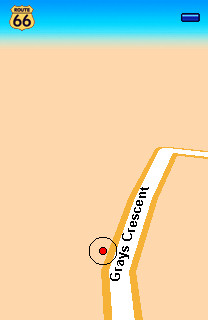
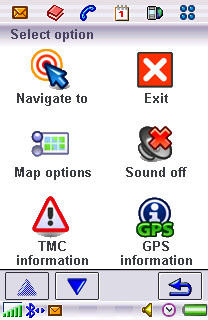
So I tried "WESTERN AV WOODLEY". No matches. Hmm... what about "WESTERN AV RG", RG being the start of the post code for the Reading area. Now there are just a handful of matches, including two for the right road, but with no mention of Woodley. Instead, they're listed as under Reading, over three miles away. Not a good start.
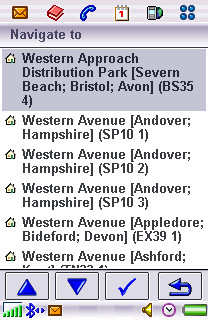
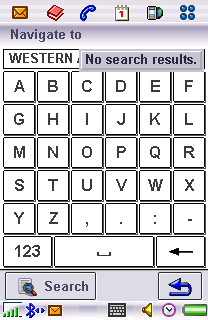
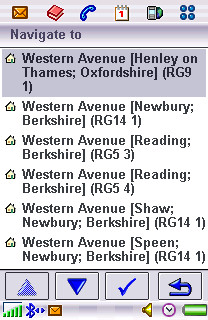
Let's try a destination in a neighbouring town. Grey's Road in Henley. There's no apostrophe on the on-screen keyboard, so in goes "GREYS RD HENLEY". Again, I've no idea what the postcode is. No matches. OK, just "GREYS HENLEY". Some matches, including the one I want, so I'm in business. Calculation of this seven mile route takes about five seconds and then the first voice instruction sounds... very quietly.
Rotating the Jog Dial shows that Route 66's built-in volume is already at maximum. Then I remembered a trick from my own P900 days. Using the Internet button as a way back into the main UIQ interface, I tapped on the system 'Multimedia' control in the bottom-of-screen status bar. Dragging this up to maximum cured the problem and, switching back to Route 66, the spoken instructions were much clearer, though still no match for a noisy car at high speed, I suspect. This isn't the program's fault, more a limitation of using a smartphone with a quiet speaker, but the software should still have been able to 'drive' the main system volume and not rely on the user knowing how to do this.
The now obligatory 3D display is fairly well drawn, although the update rate is noticeably slower than on TomTom's version. The bar at the top shows the next road to look out for and the two turn boxes show the next junction and the one after that. I deliberately took a wrong turning and Route 66 noticed within a couple of seconds and after another five seconds of calculation had a new route for me, looking ahead on the road I was currently on. So far so good.
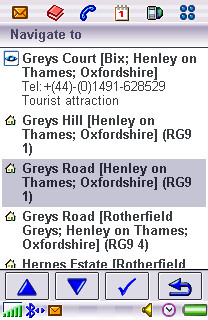
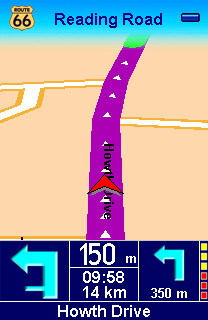
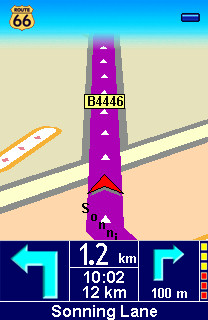
I'm now travelling along a very minor estate road but heading up to the very busy junction with the A4 from London to Reading. Now, I know these roads. What's actually needed is a complete stop, a wait for 30 seconds for a gap in the traffic and then pulling out onto the opposite carriageway, then turning left after only a few metres. Route 66's assessment of the entire maneouvre? "Follow the course of the road". What?! A glance down at the P910i's display confirms that the software considers the junction from minor B road to major A road and back to minor B road as a simple straight line, with no special instructions needed! At the very least, I'd have hoped for "Go straight on". I checked with TomTom MOBILE 5 on the exact same route and junction - TomTom clearly says "Turn right, then turn left", which is spot on.
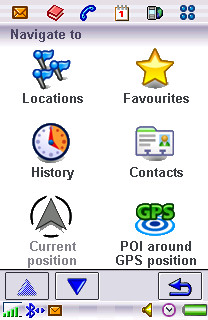
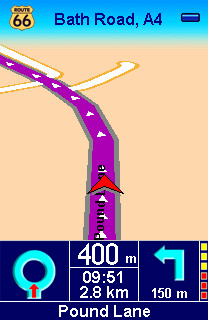
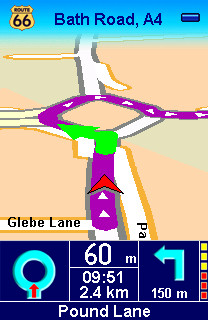
Rather dispiritedly, I decide to head back home, travelling along a B road and approaching a major roundabout on the A4, needing to turn right, i.e. go off at '3 o'clock'. The Route 66 display, shown here, confirms this manouevre, but amazingly the voice prompt comes out with "In 150m, at the third road, turn left"! Technically, I suppose I do want the third exit off my current path, but not to acknowledge the roundabout at all in the instructions is just plain confusing.
Route 66's instructions aren't 'wrong' that often, they're just nowhere near as good as those of its competitor. Ditto the screen displays. Ditto the location selector (TomTom requests a town location first, making sure that road search results are relevant). This sounds harsh, but (partly due to the TomTom-influenced menu system) Route 66 for UIQ comes across as a lower budget clone of MOBILE 5.
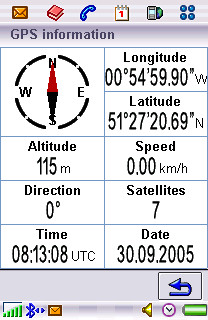
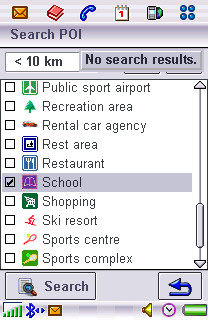
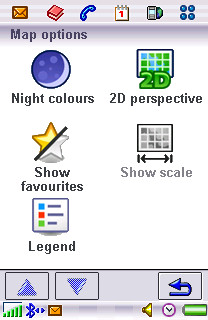
There's a POI system in Route 66, although as usual the supplied databases are woefully populated. I tried searching for parks and schools within 10km of me and came up with no matches, despite Woodley being more or less full of both parks and schools. POIs in cities are better represented, but (and TomTom's just as guilty on this count) the developers should really make the limitations of the POI system clear.
Most of the features present in last year's Series 60 version are here but given a UIQ face lift to take advantage of the larger screen. You can add favourites, to get back to them more easily later on, you can set up multiple 'vias' for complex journeys and you can browse around the digital maps in any of six (this isn't really enough) custom scales.
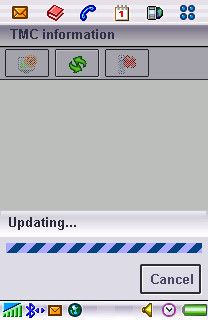

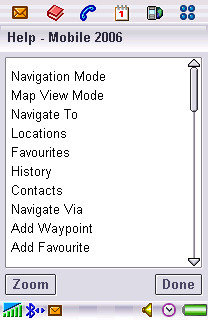
Traffic information is available for free, a plus over TomTom at last, and unlike the Series 60 version there's a voice sample telling you that new traffic information has been incorporated into your route. I have to confess to not spending the hours in problem areas necessary to really push the traffic system, but any traffic info is better than none and I welcome the free inclusion of this feature.
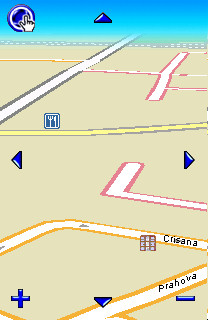
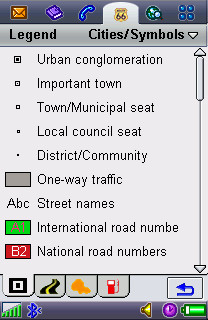
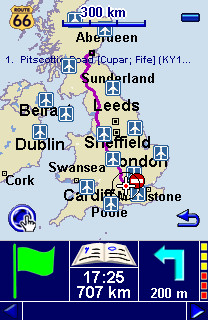
A very good help system and an adequate set of preferences complete Route 66 for UIQ. Coming on a 256MB card means that over 60MB is available for your own use, meaning that you may be able to install all your main games and applications here and only ever need to swap cards when (for example) you want to play some music (stored separately on a larger card). Route 66 is also supplied on CD, in case you want to install it manually onto your own large expansion card, which is handy.
Is Route 66 Mobile Britain 2006 worth buying? Well, after navigating through the usual buying maze, you'll almost certainly find that the Route 66 option is cheaper than the corresponding TomTom MOBILE 5 one. But ultimately there's a reason for the difference and it's that Route 66 isn't as good. It still seems churlish to complain, considering the level of functionality here, but the presence of (at least) one excellent competitor mean that direct comparisons are the order of the day.
Reviewed by Steve Litchfield at
